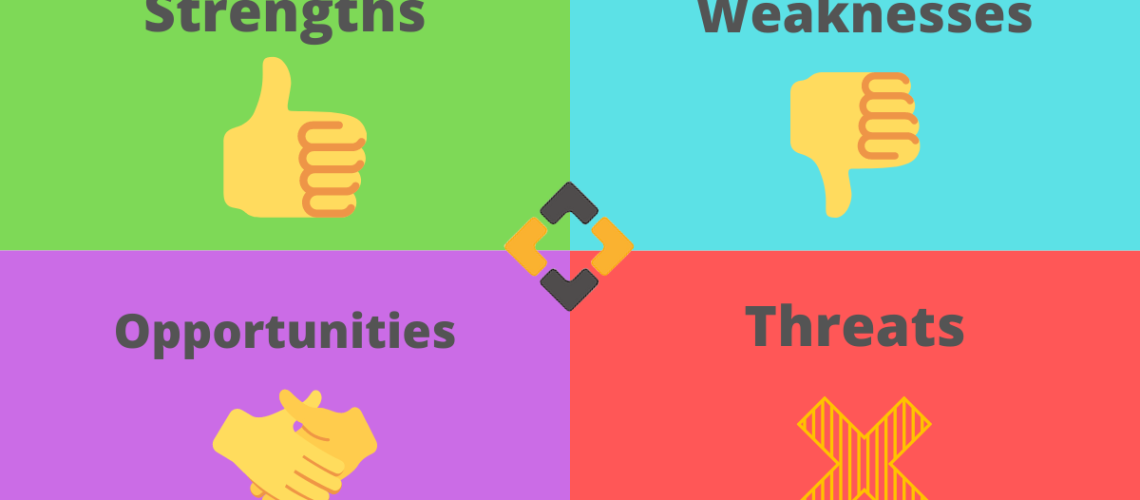Don’t under estimate the power of conducting a SWOT (Strengths, Weaknesses, Opportunities, and Threats) analysis.
When we are working with clients this is usually completed quite early on in the process to get an overview of a company’s potential and is a key component when developing a business strategy.
Below is a reminder of how to conduct a SWOT analysis with your team to get the most out of the process.
It never ceases to amaze me how powerful this process is when conducted this way. It often identifies significant opportunites that were just sitting under your nose.
Strategic planning is the formal consideration of an organisation’s future course. All strategic planning deals with at least one of three key questions:
1. “What do we do?”
2. “For whom do we do it?”
3. “How do we excel?”
We conduct a SWOT analysis of the business to feed into the overall process. Typically strategic planning can be a top down process, but it we find it works best with both a top down and bottom up focus.
The purpose of the SWOT is to give a bottom up view of what critical issues need attention from the business operating perspective and what opportunities might exist for the business to investigate and capitalise on.
Specifically you want to:
- Review and highlight the areas of the business that need the highest priority for effort and capital.
- Ensure that you spend time on the most important things.
- To check that the business strategy has considered all key opportunities and challenges.
- Get an understanding of current challenges facing the business and a sense of the urgency surrounding them.
From the SWOT analysis we are seeking to get a list of potential “Projects” and “Actions” that fit into one of four categories:
- Projects that you should be getting on with now that are not dependant on capital
- Projects that we should be getting on with now that are dependent on capital
- Projects that need further investigation now
- Projects that have merit but have a lower priority and should be noted for future review.
To do this we agree a time and date to meet with the key staff in your business together. The time may vary but is likely to take approx. 4 hours.
It is best to first outline the process and then as a group we brain storm and record the Strengths, Weaknesses, Threats and Opportunities on a white board.
Once the SWOT list is completed we will go back through the list and discuss.
- How we could capitalise on our strengths
- What could be done to mitigate the weaknesses
- What could be done to mitigate or avoid the threats
- What needs to happen to take advantage of the opportunities.
This is completed at a broad level just to get a sense of the actions required. These are then compiled into a list of potential projects or actions
Next we go through the list of projects and actions to get a sense of the magnitude of financial impact on the business in terms of likely capital required if any and likely benefit from undertaking the project or action. For some areas even the magnitude of impact may not be known so it may simply be recorded as important but needs more investigation. At the same time a brief estimate is made about the ease implementation. This will help went ranking the projects/actions.
Finally we will group the potential projects/actions into one of 4 categories as stated in the expected outcome.
Below are some examples of areas for consideration when assessing the SWOT;

Conducting a SWOT anaylsis is by no means the start and finish of strategic planning, but is vital component and you’ll be surprised at what comes from it if you involve the team. It’s a very good way of getting that bottom up input into your plans for the future.
All it takes is time and a white board.
Of course we’re here to help if you need it.

